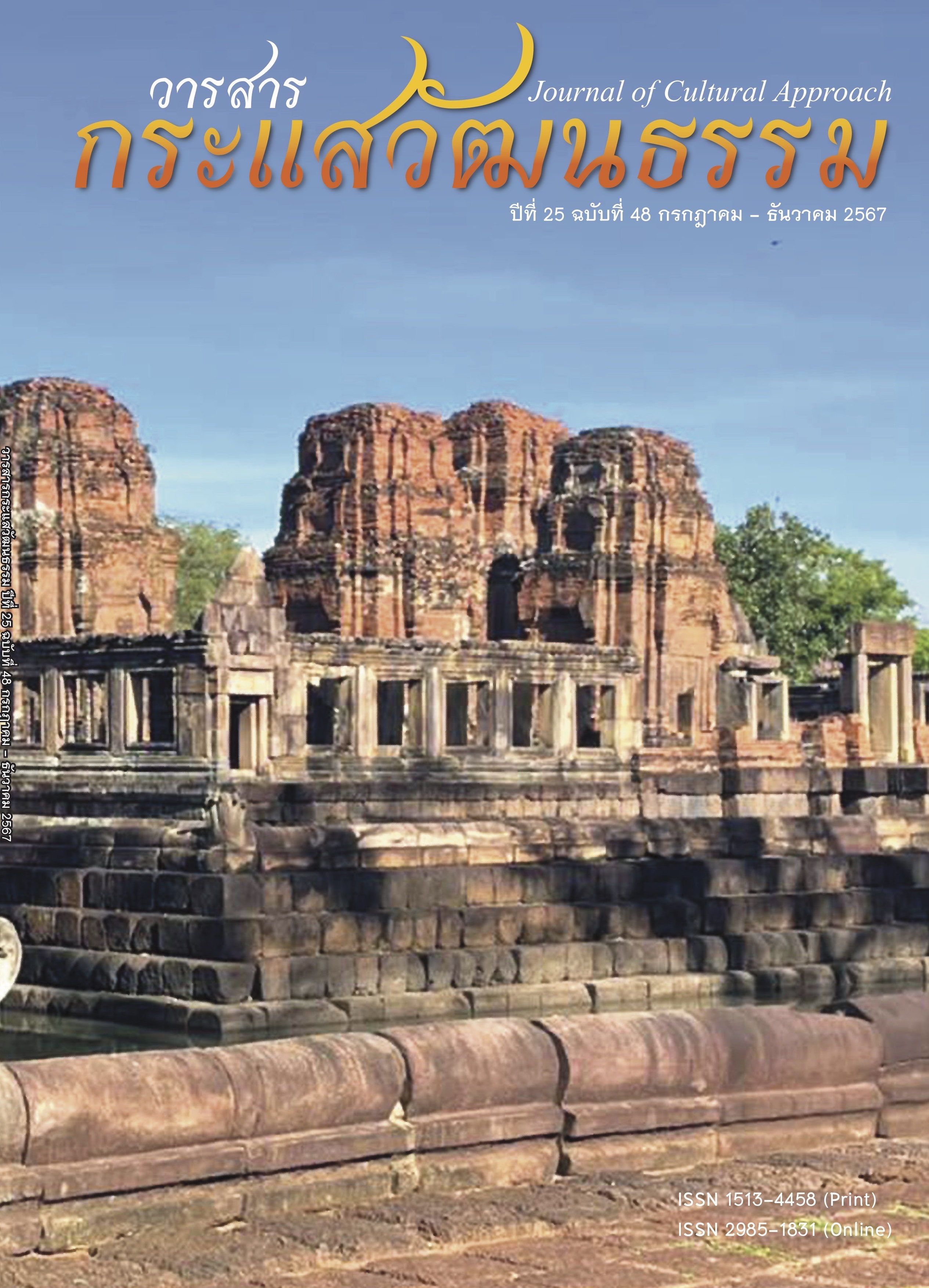Potpourri: Science and Art from the Wisdom of Creating Incenses
Main Article Content
Abstract
Potpourri is a Thai incense that comes from combining science and the art of creating perfumery, including designing souvenirs used on various occasions, which has been popular since the past until the present. Potpourri is therefore cultural heritage and the method of scent utilization is advantageous, reflecting the meticulousness and creativity in established work. Potpourri production in the past popularly used local ingredients and manufacturing methods based on traditional wisdom. Due to social and cultural changes, innovative knowledge of the altered materials is integrated and deployed appropriately. This includes the use of technology in production that makes potpourri have various production models. Accordingly, the variety of incenses available at present leads consumers to have more options for their use. This is one because that has gradually decreased the popularity of traditional potpourri. Consequently, knowledge and product development are currently promoted as an alternative to conserving the traditional potpourri wisdom in order to meet current consumer needs, and potpourri is a cultural product that can be further developed to increase value by creating a Thai-style incense combined with artistic beauty.
Article Details

This work is licensed under a Creative Commons Attribution-NonCommercial-NoDerivatives 4.0 International License.
Proposed Creative Commons Copyright Notices
1. Proposed Policy for Journals That Offer Open Access
Authors who publish with this journal agree to the following terms:
- Authors retain copyright and grant the journal right of first publication with the work simultaneously licensed under a Creative Commons Attribution License that allows others to share the work with an acknowledgement of the work's authorship and initial publication in this journal.
- Authors are able to enter into separate, additional contractual arrangements for the non-exclusive distribution of the journal's published version of the work (e.g., post it to an institutional repository or publish it in a book), with an acknowledgement of its initial publication in this journal.
- Authors are permitted and encouraged to post their work online (e.g., in institutional repositories or on their website) prior to and during the submission process, as it can lead to productive exchanges, as well as earlier and greater citation of published work (See The Effect of Open Access).
Proposed Policy for Journals That Offer Delayed Open Access
Authors who publish with this journal agree to the following terms:
- Authors retain copyright and grant the journal right of first publication, with the work [SPECIFY PERIOD OF TIME] after publication simultaneously licensed under a Creative Commons Attribution License that allows others to share the work with an acknowledgement of the work's authorship and initial publication in this journal.
- Authors are able to enter into separate, additional contractual arrangements for the non-exclusive distribution of the journal's published version of the work (e.g., post it to an institutional repository or publish it in a book), with an acknowledgement of its initial publication in this journal.
- Authors are permitted and encouraged to post their work online (e.g., in institutional repositories or on their website) prior to and during the submission process, as it can lead to productive exchanges, as well as earlier and greater citation of published work (See The Effect of Open Access).
References
Amatadech, S. (2011). Thai Incense, Souvenirs, and Spa. Methavini.
Association of Thai Economists. (2003). Artificial Vocabulary. Amarin Printing and Publishing.
Avas, T. (2004). Sukonthachart Souvenirs. Odean Store.
Boonyasai, S. (1995). Instructional Documents for the Fragrances and Gift Items Course. Rajamangala Institute of Technology Chotiwej Campus.
Bunsong, P. (2005). Improvement of Aroma in Thai Pot-Pourri and Dry Flowers by Using Starch Film as Aroma Fixative. King Mongkut's University of Technology Thonburi.
Chongjai, N. (1994). Aromatherapy and Fragrances from Natural Extracts. Kamkaew.
Institution of Thai Studies, Chulalongkorn University. (2014). Potpourri. Thai Studies Newsletter, 15(Special), 19-22.
Kengcharoen, B. (n.d.). Thai Perfumery Recipe Continue the Culture Excellent Thai Wisdom. Phetkarat.
Klinchampa, N. (2002). Thai Fragrances, Thai Wisdom. Se-education.
Laorit, N. (2016). Fragrance Chemistry. Chulalongkorn University Press.
Nawarat, S. (1964). The Art of Flower Arrangement and Gift Making. Khao Na Publishing.
Phongvutith, N. (2007). Medicinal Plants and Thai Aromatic Preparations. Thong Printing.
Phonimdaeng, B. (2014). Thai Fragrance Wisdom. Phet Karnruen.
Rattanaporn, K. (2021). Forest Wood to the Development of Dry Wood Ornament Products. Highland Research and Development Institute (Public Organization).
Royal Institute. (2013). Royal Institute Dictionary, 2011 Edition. Siriwatana Interprint Co., Ltd.
Rueangnong, P. (2011). Pattani Silk: the Culture of Thai Muslims in the Southern Border. Sathaporn Books Limited.
Srisuwan, S. (2012). Technology of Fragrances Product Development. Triple Education.
Yordon, K., Sihawatthanakun, P., Phongsai, S., Jaithon, A. & Yunsan, A. (2021). Odor-Release Efficiency Measurement and the Development of Odoriferous Perlite Wedding Souvenirs. Research on Modern Science and Utilizing Technological Innovation Journal, 14(3), 77-90.


